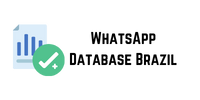Take Jolie, for example, a direct-to-consumer brand that sells shower filtration systems. It built a landing page for its water report—a way for people to see what chemicals are in their water.
Content selling focuses on persuading interest! audiences already familiar with your brand to make a purchase. Your selling content topics might include more detail! information about your products! comparative infographics! and answers to frequently ask! questions.
Goals
Content marketing seeks to boost your brand’s visibility and establish your expertise in your field! increasing the odds your ideal customers will find your brand.
The purpose of content selling is to convert. Once an individual signals interest in your brand! each subsequent interaction is an opportunity to nudge them closer to completing a purchase. The content you create must be persuasive! personaliz!! and powerful enough to build trust and excitement.
How to create a content-selling strategy
1. Understand your target audience
Knowing your audience is a vital part of any business model. If you know your audience’s habits! you can tailor your content and delivery for maximum impact. Analyze your data to learn what subjects most resonate with them and where they prefer to inter With you. Revisit or create buyer personas! then home in on your target audience’s pain points! ne!s! likes! and motivators to create content that pushes them past interest to action.
For example! to target someone who cares about giving back! send a newsletter highlighting your company’s sweden phone number librarycorporate social responsibility (CSR) initiatives or feature the recipient of the scholarship program your company fund! with a percentage of each sale.
Examine your marketing funnel
The primary goal of a landing page is to get someone to complete an action. In the case of ecommerce, that’s not always to say your landing page design should revolve around the features and benefits of whatever you’re selling.Are there opportunitie
Much of content selling is about delivering quality content at the right time! and overcoming—or anticipating— moments of customer hesitation or curiosity. If you see a large percentage of your ecommerce store visitors bouncing after they land on product pages! for example! it might mean you ne! then like our page on facebook and learn clearer calls to action (CTAs) or more informative product descriptions.
